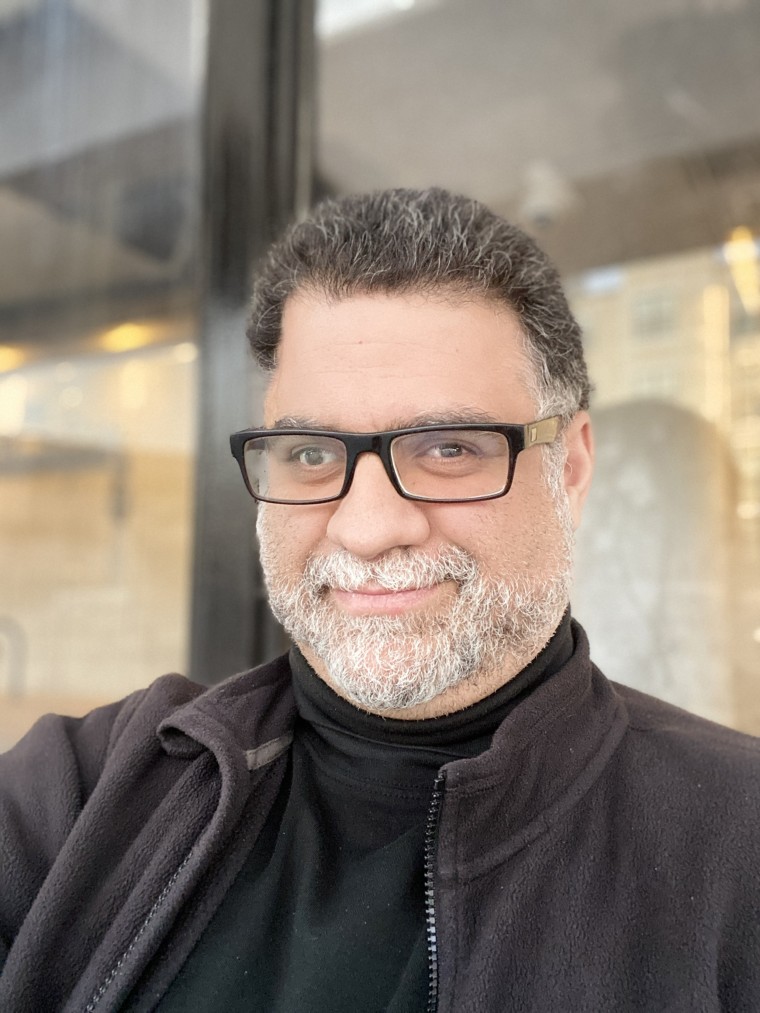Recently, Eugenio Ravelo Mendoza visited a local clinic. When he went into the exam room, a nurse spoke to him. But his eyes were glued to a tablet, not on her. She was frustrated until she realized he was using video remote interpreting (VRI), a service that uses video-conferencing tech to enable a sign language interpreter to aid conversation. Ravelo Mendoza is deaf.
“I had to show her what I was using,” Ravelo Mendoza, 43, a deaf interpreter and an Apple employee in Washington, D.C., told TODAY via a sign language interpreter. “I’m happy to have (VRI) because it is safer for the interpreter too. It is faster.”

Doctors’ offices often expect to treat patients who are deaf or hard of hearing so they sometimes offer VRI or interpreters that make communicating easier. But mask wearing requirements — needed to slow the spread of COVID-19 — make it harder for deaf and hard of hearing people to communicate.
“It’s worse at the stores,” he explained. “I have to mentally prepare myself when I go into the store knowing the staff is nervous and anxious about COVID-19. I try to be understanding … It is frustrating.”
Reema Bogin agrees. The attorney at a federal government agency has neurofibromatosis type 2 (NF2), a disorder which causes benign tumors to grow on her auditory nerves. A surgery to remove a nerve tumor left her completely deaf in her left ear when she was 19. Over the last decade, the hearing in her right ear has been declining. Today, she relies on a hearing aid in her right ear and lip reading. Still, it is difficult understand people — especially if they are wearing a mask.
“Masks, particularly N95 masks, muffle a speaker's voice, making communication even more difficult. Complicating matters even further is the CDC recommendation that people remain at least 6 feet away from each other,” the 37-year-old who lives in Arlington, Virginia, told TODAY via email. “The further away one is from the speaker, the harder it is to hear and understand them.”

Bogin, who wrote an essay about her experiences during the pandemic in Arlington Magazine, has been working from home since mid-March. But she often has in-person doctor’s appointments for an infusion that helps manage her condition. In the past, her husband, Alex, attended appointments to assist. At the first appointment after social distancing started, staff tried to prevent Alex from joining her.
“I am generally an assertive person so I speak up for myself regarding my communication needs,” she said. “I explained that I would need him nearby to enunciate or repeat words or to fingerspell for me on account of my hearing loss so they let him remain with me.”
Still going to the grocery store or eventually taking the Washington, D.C. metro worries her.
“Another major fear is not being able to understand when someone is talking to me on the metro, especially in an emergency situation,” Bogin said. “Even before mask-wearing was prevalent, I was unable to hear announcements on the metro but could at least ask someone next to me what was said over the loudspeaker."
Bogin and Mendoza agree that people can make simple efforts to help people who are deaf or hard of hearing. Masks with clear windows or clear face shields make it easier for lip reading, though not everyone can read lips. Not all masks are approved by the U.S. Food and Drug Administration to wear in medical settings, but clear masks are available for the public to use. A college student in Kentucky started making clear masks, which she gives out free of charge, to those who want to communicate with everyone.
The first and easiest thing people can do? Be kind.
“Patience is number one,” Bogin said. “I always have a pen and paper on hand and my cell phone nearby if I need someone to write something down or have something transcribed.”
People could learn a few phrases in American Sign Language or fingerspelling, which would go a long way to help people who are deaf or hard of hearing. Though some people don’t know ASL, like Bogin, who is learning.
"Communication among the deaf is not monolithic,” she added. “Communication capabilities and preferences are idiosyncratic as there is such a wide-ranging spectrum of levels and types of deafness.”
Michael Kiener, a professor of rehabilitation counseling at Maryville University in St. Louis, Missouri, said that advances in assistive technology, such as Otter Closed Captioning and speech to text or signing apps on smartphones, help a lot of people communicate. However, for it to be seamless, such technologies or interpreters need to be adopted more broadly.
“Decision makers need to think about the reality issues in this new environment," he told TODAY.
While various online chat programs, such as Zoom or Microsoft Teams, might allow an interpreter or closed captioning for the meetings, each platform handles it differently and not all are as successful.
“As a society we’re not being proactive and thinking about how we communicate,” Kiener said.
There’s certainly one thing that doesn’t help yet people often use: Shouting.
“Hearing people try to talk louder,” Mendoza said. “It is a bit of a struggle.”
Bogin understands that mask wearing and social distancing remains essential to slowing the spread of the coronavirus and it will present challenges for a while. She encourages everyone be empathetic.
“Being deaf is exhausting,” Bogin said. “The pandemic has only exacerbated this challenge even more. So, please do not get frustrated with us when we do not understand something you say. We are working very hard to keep up and all we ask for is a little bit of patience, understanding and communication improvisation.”
CORRECTION (May 15, 2020, 1:15 p.m. EST): The story has been updated to clarify Reema Bogin's level of hearing loss.
